Research in the area of herbal psychopharmacology has clearly improved in recent decades. Self-administration of herbal medicines has been the most popular therapeutic alternative to standard medicine.
Since the extract of Echium amoenum exhibits an anxiolytic effect, the aim of this study is to evaluate the anxiolytic and hypnotic effects in mice of the aqueous and ethanolic extracts of aerial parts of E. italicum, a member of the Boraginaceae family.
Mice were administered the agents intraperitoneally before the start of the experiments for evaluation of hypnotic activity (induced by sodium pentobarbital, 30 mg/kg, i.p.), anxiolytic activity (elevated plus-maze [EPM] test), locomotor activity (open field test), and motor coordination (rotarod test).
The ethanolic and aqueous extracts of E. italicum, at doses of 1.2 and 2.1 g/kg, increased the percentage of time-spent and the percentage of arm entries in the open arms of the EPM and decreased the percentage of time-spent in the closed arms of the EPM. Moreover, both extracts decreased the pentobarbital-induced latency to sleep and significantly increased the total sleeping time induced by pentobarbital. In addition, locomotor activity was affected by aqueous extracts and ethanolic extract (at higher doses). Both extracts showed no effect in the rotarod test.
Conclusions
These results suggest that both ethanolic and aqueous extracts of E. italicum may have anxiolytic effects and sedative activity but no effect on muscle relaxation.
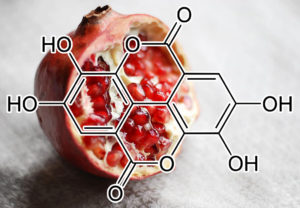
ellagic acid
Involvement of the GABAergic system in the anxiolytic-like effect of the flavonoid ellagic acid
Anxiolytic-like effects of dietary flavonoids are relatively well known. Ellagic acid is a naturally occurring flavonoid compound which is abundant in many plants and fruits. The present study was designed to investigate the antianxiety-like effect of ellagic acid in mice using an elevated plus-maze test. The involvement of the GABAergic and serotonergic systems in the antianxiety-like activity of ellagic acid was also studied. Our results showed that ellagic acid treatment (25, 50 and 100 mg/kg, p.o.), produced a significant increase in the percentage of time spent and entry into the open arms, with a profile comparable to that of diazepam (1 mg/kg, p.o.). Unlike diazepam, the anxiolytic doses of ellagic acid did not prolong the duration of sodium thiopental-induced loss of righting reflex, indicating that this flavonoid is non-hypnotic. The anxiolytic effect observed with ellagic acid treatment (25 mg/kg, p.o.) was antagonized by pretreatment with picrotoxin (a non-competitive GABAA receptor antagonist, 1 mg/kg, i.p.) and flumazenil (a benzodiazepine site antagonist, 1 mg/kg, i.p.) but not with p-chlorophenylalanine (a serotonin synthesis inhibitor, 100 mg/kg, i.p.) and pindolol (a β-adrenoceptors blocker/5-HT1A/1B receptor antagonist, 10 mg/kg, i.p.). Taken together, the data demonstrated that acute and chronic administration of ellagic acid to mice has produced antianxiety-like effect when tested in the elevated plus-maze. The experiments with different receptor blockers suggest an involvement of GABAergic system in the anxiolytic action of this bioflavonoid. However, this action is not seems to be mediated through serotonergic system.
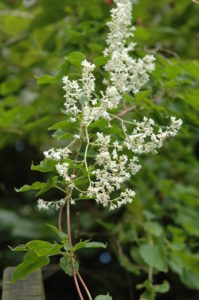
Fallopia multiflora (Thunb.) Harald. extract
Research Progress of Chinese Herbal Medicines with the Function of Improving Sleep Quality
With the problem of insomnia becoming more serious and the disadvantages of sedative and hypnotic drugs gotten by chemical synthesis becoming more obvious, Chinese herbal medicines with the function of improving sleep quality are getting more and more attention. A large number of Chinese herbal medicines with the function of improving sleep quality were found and proved. These Chinese herbal medicines have the advantages of wide sources, high safety, little side effects, no dependence and so on. They have become the main objects of the domestic and foreign scholars. In this paper, Chinese herbal medicines with the function of improving sleep quality were summarized and the kinds of Chinese herbal medicines, active ingredients, extraction methods, assay methods of the function of improving sleep quality and mechanism of action were introduced.
Chinese medicines with sedative–hypnotic effects and their active components
The main pharmacological effects of sedative agents are sedation, hypnosis, antianxiety, and antidepression. Traditional Chinese medicine (TCM) has a long history of clinical experience in treating insomnia. This review focuses mainly on the role of active ingredients from TCM in the treatment of insomnia. Single herbs and their active ingredients from TCM with hypnotic effects are summarized through reviewing the relevant literature published in the past 20 y. The active ingredients are divided into alkaloids, terpenoids, and volatile oils, flavonoids, lignanoids and coumarins, saponins, and others. Current studies on TCM in treating insomnia are described from the aspects of active ingredients, sources, experimental models and methods, results, and mechanisms. In addition, Chinese compound prescriptions developed from a variety of single herbs with sedative–hypnotic effects are introduced. The acting pathways of TCM are covered from the perspectives of regulating central neurotransmitters, influencing sleep-related cytokines, and improving the structure of the central nervous system.
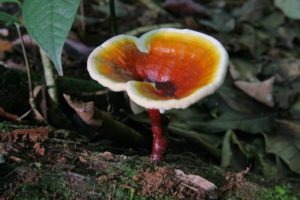
Ganoderma LUCIDUM extract Polysaccharide
The Hypnotic and Sedative Actions of the Spores of Ganoderma lucidum (Curt.: Fr.) P. Karst. (Aphyllophoromycetideae)
Ganoderma has multiple pharmacological activities and clinical uses. The aqueous extract of G. lucidum (Curt.: Fr.) P. Karst. spores also has many pharmacological activities and clinical uses. The injection made from the spores of G. lucidum (called Jisheng injection) has been used clinically for more than 20 years for its therapeutic effects on several neuromuscular disorders such as myotonia and polymyositis. Jisheng injection can gradually improve a patient’s sleep and enhance appetite after he or she takes it for about 2 weeks. To determine the pharmacological bases of the clinical effect of Jisheng injection in improving patients’ sleep, the authors investigated the hypnotic and sedative effects of Jisheng injection on the central nervous system in mice. The results are as follows: (1) subcutaneous injection of Jisheng extract significantly prolonged the sleeping time induced by both sodium pentobarbital and barbital in mice in a dose-dependent manner; (2) Jisheng extract also induced sleep in mice after intraperitoneal injection of a subthreshold dose of pentobarbital which could not induce sleep in normal mice; (3) repeated injection of the effectively hypnotic dosage of Jisheng extract once daily for 8 consecutive days did not induce addiction, as the prolonging effect of Jisheng on pentobarbital sleeping time was not shortened, whereas the chemical hypnotic drug diazepam induced addiction after repeated injection for 8 days; and (4) Jisheng injection markedly decreased the spontaneous motor activity in mice. It may be concluded from these results that the aqueous extract of G. lucidum spores has hypnotic and sedative actions on the central nervous system in mice.
Anti-inflammatory, anti-nociceptive and sedative–hypnotic activities of lucidone D extracted from Ganoderma lucidum.
Inflammation and insomnia are two types of symptoms very likely occur in life, seriously perplexing people’s work and life. How to alleviate these symptoms is an urgent medical problem. Lucidone D (LUC) is a terpene from the ethanol extract of Ganoderma lucidum fruiting body. Triterpenoids are also the main pharmacological components of Ganoderma lucidum. In recent years, people pay more and more attention to its anti-inflammatory effect. In this study, LPS induced RAW264.7 macrophage inflammatory response model was used to evaluate the anti-inflammatory activity of LUC. The results showed that LUC could significantly inhibit the production of inflammatory mediators NO, which may play a role by down-regulating the expression level of iNOS and COX-2 proteins. Meanwhile, the production of TNF-α and IL-6 was significantly inhibited. These results indicate that LUC has obvious anti-inflammatory activity. Writhing and sedation tests in ICR male mice showed that LUC showed significant analgesic and sedative effects. In conclusion, these results suggest the anti-inflammatory, analgesic and sedative effects of LUC in vitro and in vivo.
Extract of Ganoderma lucidum prolongs sleep time
These results suggest that GLE has hypnotic effects in freely moving rats. The mechanism by which the extract promoted sleep remains unclear, but this effect appears to be primarily related to the modulation of cytokines such as TNF-α. Furthermore, these data at least partially support the ethnomedical use of Ganoderma lucidum.
Objective:To observe the effects of Ganoderma Lucidum Granules on the sedation, hypnosis and immune function in mice. Methods: Open field method, Sleep – promoting test in combination with pentobarbital sodium, anti -convulsant activity,determining the spleen index and chest gland index,the amount of the white blood cells(WBC). Results:It can obviously reducing the autonomic activity,and promoting sleep in combination with pentobarbital sodium, anti – convulsant activity, obviously increase the spleen index and chest gland index, the amount of the WBC. Conclusion:It has the effects of sedation, hypnosis and strengthening immune function.
Objective To investigate the sedative and hypnotic effects of Ganoderma lucidum brewage(GLB).Methods The NIH mice were given with gavage of GLB 0.06,0.12,and 0.24g/kg per day respectively for 15 days.The spontaneous motion,the sleeping time induced by pentobarbital sodium in subthreshold dosage and threshold dosage,and the number of mice subjected to pentylenetetrazol-induced convulsion were observed.Results GLB can reduce the spontaneous motion,significantly longthen the mice sleeping time of pentobarbital sodium in threshold dosage and increase the number of sleeping mice under subthreshold dosage of pentobarbital sodium.GLB was synergic with pentobarbital sodium,and antagonized pentylenetetrazol-induced convulsion in a dose-dependent manner.Conclusion GLB possesses obvious sedative,hypnotic and anticonvulsive effects.
Inflammation and insomnia are two types of symptoms very likely occur in life, seriously perplexing people’s work and life. How to alleviate these symptoms is an urgent medical problem. Lucidone D (LUC) is a terpene from the ethanol extract of Ganoderma lucidum fruiting body. Triterpenoids are also the main pharmacological components of Ganoderma lucidum. In recent years, people pay more and more attention to its anti-inflammatory effect. In this study, LPS induced RAW264.7 macrophage inflammatory response model was used to evaluate the anti-inflammatory activity of LUC. The results showed that LUC could significantly inhibit the production of inflammatory mediators NO, which may play a role by down-regulating the expression level of iNOS and COX-2 proteins. Meanwhile, the production of TNF-α and IL-6 was significantly inhibited. These results indicate that LUC has obvious anti-inflammatory activity. Writhing and sedation tests in ICR male mice showed that LUC showed significant analgesic and sedative effects. In conclusion, these results suggest the anti-inflammatory, analgesic and sedative effects of LUC in vitro and in vivo.
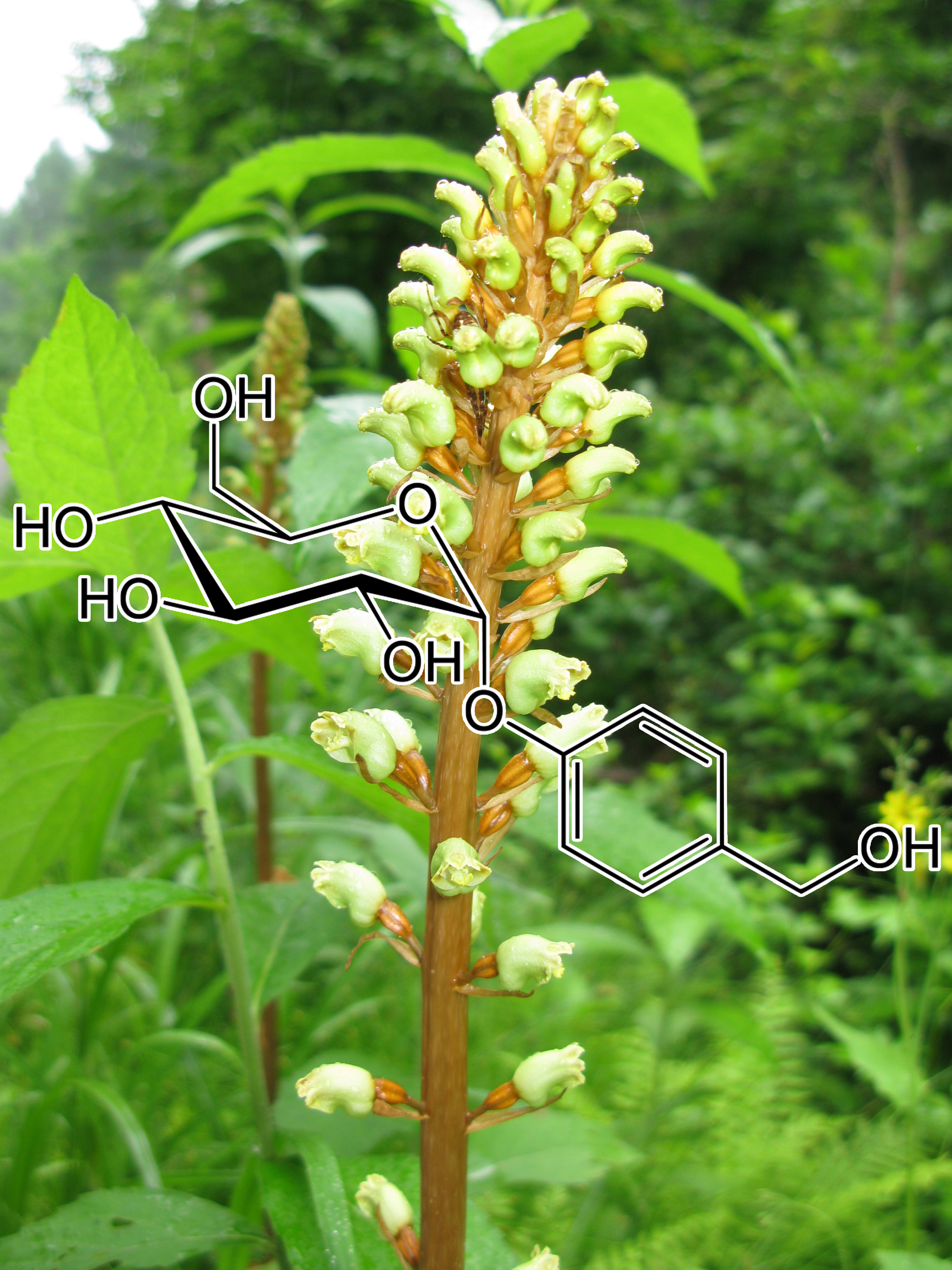
GASTRODIN
(Gastrodia elata extract)
NHBA isolated from Gastrodia elata exerts sedative and hypnotic effects
The rhizomes of Gastrodia elata have been used for the treatment of insomnia in oriental countries. N6-(4-hydroxybenzyl) adenine riboside (NHBA) was originally isolated from G. elata. For the first time we report a detailed study on the effects and mechanisms of NHBA on its sedative and hypnotic activity. Adenosine, an endogenous sleep factor, regulates sleep–wake cycle via interacting with adenosine A1/A2A receptors. Using radioligand binding studies and cAMP accumulation assays, our results show that NHBA may be a functional ligand for the adenosine A1 and A2A receptors. NHBA significantly decreases spontaneous locomotor activity and potentiates the hypnotic effect of sodium pentobarbital in mice. Sleep architecture analyses reveal that NHBA significantly decreases wakefulness time and increases NREM sleep times. However, NHBA does not affect the amount of REM sleep. Pretreatment with the adenosine A1 receptor antagonist DPCPX or the A2A receptor antagonist SCH 58261 significantly reverses the increase in sleeping time induced by NHBA in sodium pentobarbital treated mice. Immunohistochemical studies show that NHBA increases c-Fos expression in GABAergic neurons of the ventrolateral preoptic area (VLPO), which suggests that NHBA activates the sleep center in the anterior hypothalamus. Altogether, these results indicate that NHBA produces significant sedative and hypnotic effects. Such effects might be mediated by the activation of adenosine A1/A2A receptors and stimulation of the sleep center VLPO.
Highlights
► NHBA, active compound of Gastrodia elata, possesses sedative and hypnotic effects. ► Adenosine A1/A2A receptors may be involved in the hypnotic effect of NHBA. ► NHBA significantly activates the sleep center VLPO in the anterior hypothalamus.
Objective To observe the sedative and hypnotic effect of gastrodin in mice.Methods Effects of gastrodin on the autonomous activity of mice and synergy of gastrodin and sodium pentobarbital were tested.Results Gastrodin obviously decreased the times of autonomous activity of mice,and increased the subthreshold dose of sodium pentobarbital to mouse sleep.Conclusion Gastrodin has obvious effects on the sedation and hypnosis of mice.
A Review on Central Nervous System Effects of Gastrodin
Gastrodin have been extensively investigated on its biological actions. As a result, numerous pharmacological activities have been attributed to gastrodin, including sedative, hypnotic (Deng and Mo, 1979), anti-vertigo (Chen et al., 2004), analgesic (Zhang et al., 2006), anti-epileptic (Ojemann et al., 2006), antidepressant (Chen and Sheen, 2011), anxiolytic (Peng et al., 2013), memory-improving (Hsieh et al., 1997), anti-aging (Wang Z. J. et al., 2007), lowering blood pressure (Zhang Q. et al., 2008), preventing osteonecrosis (Zheng et al., 2014) effects, etc. Among its various pharmacological properties, its strong actions in CNS diseases appear to be particularly prominent. Considering its low toxicity and remarkable pharmacological performance, gastrodin might be a potential valuable therapeutic for the prevention and treatment of some CNS disorders (Zhan et al., 2016).
Gastrodin is extracted from Gastrodia elata, which is widely used for the treatment of vertigo, headache, neuralgia, neurasthenia syndrome, and brain traumatic syndrome. Studies showed that gastrodin has many pharmacological effects, including hypnosis, sedation, and anticonvulsive.
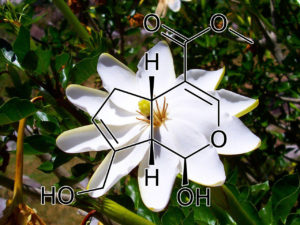
GENIPIN
(Gardenia extract)
Ethanol Extract of Gardenia augusta (L.) Merr. Flowers Produces Sleep Improvement
Sleep disorder may have detrimental consequences on health and one of the treatments is the use of hypnotics. Unfortunately, hypnotics treatment may also be accompanied by side effects and lead to dependence. The present study aimed to investigate the sleep improving effects of ethanol extract of Gardenia augusta (L.) Merr. flowers in rat model. Methods: Rats were assigned into group receiving the extract (at 0.9 or 1.8 g/kg), the reference drug crocetin (at 0.9 mg/kg) or vehicle, once a day orally for 15 days. Results: Tested on day 1 and 14 of treatment, the rats receiving 1.8 g/kg of the extract showed improvements in sleep latency, sleep duration, sleep efficiency, wake episodes, and sleep cycle, which were significantly different from crocetin. Furthermore, tested on day 2 and 15 of treatment, the rats treated with 1.8 g/kg extract demonstrated superior sedative rating scale compared to crocetin. Conclusions: Results of the present study indicates the potential of Gardenia augusta (L.) Merr. flower extract to be used as an adjunct treatment for sleep disorder. Key words: Sleep, Improvement, Gardenia augusta (L.) Merr., Flowers, Rats.
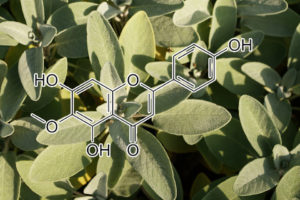
Hispidulin
(sage Herb Extract)
PHARMACOLOGICAL ASSESSMENT OF HISPIDULIN – A NATURAL BIOACTIVE FLAVONE
The literature (98) has reported sedative–hypnotic activity of hispidulin. Plentiful flavonoids from terrestrial plants have been reported with their affinity for BZD site of GABAA receptors (99). In vitro analysis of different substitutions particularly on flavone structure for their affinity to BZD site of GABAA receptor has also been reported (100); an increase in binding affinity has been stated for 6- methoxylation (hispidulin), whereas 7- or 3- methoxylation resulted in significant decrease in activity (see Fig. 2). This makes hispidulin superior compared to crisimaritin (7-methoxy compound) and galangin-3-methyl ether (3-methoxy compound) in binding affinity for BZD site of GABAA receptor. Hispidulin has also been reported from sedative plants with binding affinity value of 8 µM (89). In traditional medicine, this plant is applied as a sedative, hypnotic, expectorant, coughs suppressant, purgative, diuretic, antiseptic, vasorelaxant, and antispasmodic (9).
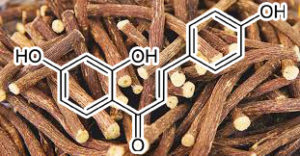
Isoliquiritigenin
(Glycyrrhiza glabra)
Hypnotic effects and GABAergic mechanism of licorice (Glycyrrhiza glabra) ethanol extract and its major flavonoid constituent glabrol
Licorice (Glycyrrhiza glabra, GG) is one of the most frequently used herbal medicines worldwide, and its various biological activities have been widely studied. GG is reported to have neurological properties such as antidepressant, anxiolytic, and anticonvulsant effects. However, its hypnotic effects and the mechanism of GG and its active compounds have not yet been demonstrated. In this study, GG ethanol extract (GGE) dose-dependently potentiated pentobarbital-induced sleep and increased the amount of non-rapid eye movement sleep in mice without decreasing delta activity. The hypnotic effect of GGE was completely inhibited by flumazenil, which is a well-known γ-aminobutyric acid type A-benzodiazepine (GABAA-BZD) receptor antagonist, similar to other GABAA-BZD receptor agonists (e.g., diazepam and zolpidem). The major flavonoid glabrol was isolated from the flavonoid-rich fraction of GGE; it inhibited [3H] flumazenil binding to the GABAA-BZD receptors in rat cerebral cortex membrane with a binding affinity (Ki) of 1.63 μM. The molecular structure and pharmacophore model of glabrol and liquiritigenin indicate that the isoprenyl groups of glabrol may play a key role in binding to GABAA-BZD receptors. Glabrol increased sleep duration and decreased sleep latency in a dose-dependent manner (5, 10, 25, and 50 mg/kg); its hypnotic effect was also blocked by flumazenil. The results imply that GGE and its flavonoid glabrol induce sleep via a positive allosteric modulation of GABAA-BZD receptors.
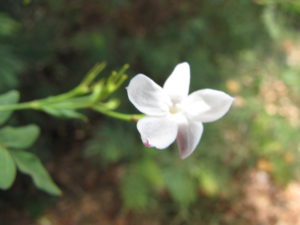
Jasminum grandiflorum / Officinale
(Spanish Royal Catalan jasmine)
POTENTIATING EFFECTS OF AERIAL PARTS OFJASMINUM OFFICINALLE ON SLEEP
Phytol, a diterpenoid isolated from the ethanolic fraction of Jasminum officinalle was found to raise the levels of gamma-aminobutyric acid, a sleeppromoting neurotransmitter, in the brain (Bang et al., 2012). The calculated LD50 and the acute toxicity both invivo and invitro study indicates that the plant is safe and have a wild range of therapeutic dose. Therefore, the hypnotic effect of Jasminum officinalle accompanied with no neurotoxicity, leading to further support of its safety. In conclusion, results obtained in the study is achieved or set up for the first time to demonstrate the jasmine prolongation of the induction in the sleeping period behavior caused by pentobarbital in experimental animals model. The sleep prolonging effect was comparable to that of induced by diazepam and accompanied with no neuron toxicity. The most chemical constituents shows the hypnotic activity is non-polar agents found in NBF. Isolation of the exact component that produce and yield a new sedative–hypnotic drug is required in future.
Objective To evaluate the role of Arabian jasmine volatile oil in the improvement of sleep quality and assess its calm and hypnotic effects.Methods 45 healthy volunteers were allocated to receive Arabian jasmine volatile oil.Before and after Arabian jasmine volatile oil treatment,the volunteers’ sleep quality was assessed by PSQI.Results After treatment with Arabian jasmine volatile oil,the Pittsburgh sleep quality index could be improved in 45 healthy volunteers.Especialy in sleep disorder groups,the PSQI could be recovered,and the sleep disorder,hypnotige drugs and function of daytime were improved too.Conclusion Arabian jasmine volatile oil can improve the sleep quality.
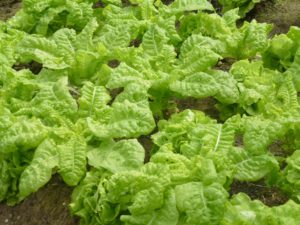
Lilium lancifolium Thunb. extract
Role of Effective Composition on Antioxidant, Anti‐inflammatory, Sedative‐Hypnotic Capacities of 6 Common Edible Lilium Varieties
Nine Lilium samples (belong to 6 different cultivars with different maturity stage) were qualitatively and quantitatively analyzed of total phenolics (TP), total flavonoids (TF), total saponins (TS), total carbohydrates (TC, polysaccharides), and soluble proteins contents (SP), and the monomeric components were quantified utilizing high‐performance liquid chromatography with photodiode array detector (HPLC‐PAD) associated with liquid chromatography–mass spectrometry (HPLC‐MS). Antioxidant activity (reducing power and DPPH radical scavenging activity), anti‐inflammatory (xylene‐induced mouse ear edema detumescent assay and carrageenan‐induced mouse paw edema detumescent assay), and sedative‐hypnotic capacities (sodium pentobarbital‐induced sleep assay) were comparatively evaluated in mouse model. Additionally, correlation analysis and principal component analysis were carried out to detect clustering and elucidate relationships between components’ concentrations and bioactivities to clarify the role of effective composition. Lilium bulbs in later maturity stage preliminary evidenced higher saponins content, and lower phenolic acids and flavonoids content. The result demonstrated that Lilium bulbs generally had distinct antioxidant, anti‐inflammatory, and sedative‐hypnotic capacities. Varieties statistically differed (P < 0.05) in chemical composition and bioactivities. Lilium varieties of Dongbei and Lanzhou presented potent sedative‐hypnotic effect and anti‐inflammatory activity. The antioxidant capacity was related to the phenolic acids and flavonoids contents, the anti‐inflammatory and sedative‐hypnotic capacities were related to the saponins content. This is first study presenting comprehensive description of common edible Lilium bulbs’ chemical compositions, sedative‐hypnotic, and anti‐inflammatory capacities grown in China. It would informatively benefit the genetic selection and cultivated optimization of Lilium varieties to improve nutritional quality, and promote Lilium bulbs as a therapeutic functional food worldwide.
To screen and analyze the hypnotic active ingredients of Lilium lancifolium Thunb.Methods:Direct sleep experiment and prolonged pentobarbital sleeping time experiment are used to study the hypnotic active ingredients of Lilium lancifolium Thunb. The hypnotic active ingredients are separated by separation column like macroporous resin column and MCI column. Magnetic resonance imaging(MRI) is used to identify the structure of active ingredients. The n-butanol extract of Lilium lancifolium Thunb can increase the rate and time of sleep,accelerate the sleep of mice. By separating,the main structure of the active ingredients are(25 R)-3β,17α-dihydroxy-5α-spirostan-6-one-3-O-α-L-Rhamnopyranosyl-(1 →2)-β-D-glucopyranoside and(25 R)-3β-hydroxy-5α-spirostan-6-one-3-O-zα-L-Rhamnopyranosyl-(1 →2)-β-D-glucopyranoside. The n-butanol extract of Lilium lancifolium Thunb has significant hypnotic effect and the structure of its main ingredients are saponins.
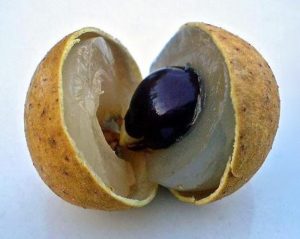 LONGAN FRUIT PEEL(Dimocarpus longan Lour extract)CNS Depressant, Analgesic Effects of Different Solvent Extracts of Peel of Dimocarpus Longan Lour Fruits
LONGAN FRUIT PEEL(Dimocarpus longan Lour extract)CNS Depressant, Analgesic Effects of Different Solvent Extracts of Peel of Dimocarpus Longan Lour Fruits The results of phytochemical screening test of crude extracts of peel of Dimocarpus longan Lour. in different solvent media provoked the authors to check for its possible CNS depressant, analgesic and antidiarrheal activities in animal models. In present investigation we find out the above mentioned pharmacological activities of ethanol (ENLP), petroleum ether (PELP), chloroform (CHLP) and ethyl acetate (EALP) extracts of D. longan fruits peel. The CNS depressant activity was evaluated by observing the reduction of locomotor and exploratory behavior in the open field and hole cross tests; analgesic activity was examined using acetic acid-induced writhing test and formalin induce licking test and antidiarrheal efficacy was checked by castor oil and magnesium induced diarrhea. All tests were accomplished after oral administration of crude extracts in rat model at doses 200 and 300 mg/kg body weight. The statistical analysis of these results showed that the plant extracts had significant (p<0.01) dose dependent CNS depressant, analgesic and antidiarrheal activities comparing with the standard drugs.The findings prove that the above experimented extracts have potent pharmacological effects due to different bioactive constituents but further researches are required to explore mechanisms of action responsible for the above mentioned activities.It has also demonstrated sedative, anxiolytic, hypnotic, anticonvulsant, antitumor, antiviral, antiparasitic as well as antimicrobial activities which are important pharmacologic discoveries.
Screening of central nervous system (CNS) depressant and antinociceptive activities of methanolic extracts of the peel and seed of Nephelium longan fruitsIn recent years, research on medicinal plants has engrossed a lot of interest worldwide. Large body of proof has been accumulated to reveal promising potential of medicinal plants used in different traditional, complementary and alternative systems. Keeping this in mind, the present study was carried out to scrutinize the antinociceptive and central nervous system (CNS) depressant activity of the methanol extracts of seed (MNLS) and peel (MNLP) of
Nephelium longan in young Long-Evans rats. Both types of tests were conducted after oral administration at doses of 250 and 500 mg/kg body weight of rats. CNS activity was evaluated by watching the fall of rats in locomotor and exploratory activities. We also used open field and hole cross tests. The analgesic activity was examined using acetic acid-induced writhing and formalin tests. The results of the statistical analysis showed that the experimental extracts had significant (P < 0.01 and 0.05,) dose dependent CNS depressant and antinociceptive activities. In the acetic acid-induced writhing model, MNLP at dose of 500 mg/kg exerted a maximum of 54.43% inhibition of writhing response, whereas MNLS gave 52.531% inhibition which are comparable to 58.86% inhibition of writhing by standard drug, indomethacin (10 mg/kg). In case of CNS depressant activity, both extracts displayed dose dependent suppression of motor activity and exploratory behavior in the tested models. The results of the study indicate that the plant possesses strong analgesic and central nervous system depressant activity.
![]() ” alt=”” width=”300″ height=”225″ data-src=”https://theinterstellarplan.com/wp-content/uploads/2020/05/Lycopus-europaeus-300×225.jpg” data-srcset=”https://theinterstellarplan.com/wp-content/uploads/2020/05/Lycopus-europaeus-300×225.jpg 300w, https://theinterstellarplan.com/wp-content/uploads/2020/05/Lycopus-europaeus-768×576.jpg 768w, https://theinterstellarplan.com/wp-content/uploads/2020/05/Lycopus-europaeus.jpg 1024w, https://theinterstellarplan.com/wp-content/uploads/2020/05/Lycopus-europaeus-195×146.jpg 195w, https://theinterstellarplan.com/wp-content/uploads/2020/05/Lycopus-europaeus-50×38.jpg 50w, https://theinterstellarplan.com/wp-content/uploads/2020/05/Lycopus-europaeus-100×75.jpg 100w, https://theinterstellarplan.com/wp-content/uploads/2020/05/Lycopus-europaeus-960×720.jpg 960w, https://theinterstellarplan.com/wp-content/uploads/2020/05/Lycopus-europaeus-500×375.jpg 500w” data-sizes=”(max-width: 300px) 100vw, 300px” />
Lycopus europaeusPharmacological evaluation of Sedative and Hypnotic activities of methanolic extract of Lycopus europaeus
” alt=”” width=”300″ height=”225″ data-src=”https://theinterstellarplan.com/wp-content/uploads/2020/05/Lycopus-europaeus-300×225.jpg” data-srcset=”https://theinterstellarplan.com/wp-content/uploads/2020/05/Lycopus-europaeus-300×225.jpg 300w, https://theinterstellarplan.com/wp-content/uploads/2020/05/Lycopus-europaeus-768×576.jpg 768w, https://theinterstellarplan.com/wp-content/uploads/2020/05/Lycopus-europaeus.jpg 1024w, https://theinterstellarplan.com/wp-content/uploads/2020/05/Lycopus-europaeus-195×146.jpg 195w, https://theinterstellarplan.com/wp-content/uploads/2020/05/Lycopus-europaeus-50×38.jpg 50w, https://theinterstellarplan.com/wp-content/uploads/2020/05/Lycopus-europaeus-100×75.jpg 100w, https://theinterstellarplan.com/wp-content/uploads/2020/05/Lycopus-europaeus-960×720.jpg 960w, https://theinterstellarplan.com/wp-content/uploads/2020/05/Lycopus-europaeus-500×375.jpg 500w” data-sizes=”(max-width: 300px) 100vw, 300px” />
Lycopus europaeusPharmacological evaluation of Sedative and Hypnotic activities of methanolic extract of Lycopus europaeusThe methanolic extract of Lycopus europaeus was evaluated on central nervous system. The methanolic extract produced significant sedative effect at the doses of 200, 400 and 600 mg/kg (by oral route), compared to reference substance diazepam in hole board and thiopental -induced sleeping time methods. While the hypnotic effect was calculated at the doses of 800 and 1000 mg/kg via oral pathway significantly reduced in both the reestablishment time and number of head dips during the traction and hole-board tests. In conclusion, these results suggest that the methanolic extract of Lycopus europaeus possess potent sedative and hypnotic activities, which supported its therapeutic use for insomnia.
A Review on Lycopus Europaeus: A Potential Medicinal PlantHypnotic effect: The sedative effect of the methanolic extract (100, 200, 400, and 600 mg/kg, po) of Lycopus europaeus was evaluated compared to reference drug (diazepam) in hole board and thiopental -induced sleeping time methods in mice. The hypnotic effect was evaluated at the doses of 800 and 1000 mg/kg, op, via reduction in reestablishment time and number of head dips during the traction and hole-board tests. The methanolic extract of Lycopus europaeus produced significant sedative effect at the doses of 200 and 400 mg/kg po. Furthermore, the dose of 100 mg/kg did not decreased the reestablishment time effectively. In the hole-board test, a significant reduction in the number of head dips was recorded at the doses of 200, 400, and 600 mg/kg by oral route administration. The extract induced reduction in the time of onset of sleep induced by A Review on Lycopus Europaeus: A Potential Medicinal Plant 86 thiopental. The effects of the extract on onset of sleep at 800 and 1000 mg/kg were comparable to that of diazepam at 30 mg/kg(53) .
![]() ” alt=”” width=”301″ height=”233″ data-src=”https://theinterstellarplan.com/wp-content/uploads/2020/05/Matricaria-chamomilla-Chamomile3.jpg” />
” alt=”” width=”301″ height=”233″ data-src=”https://theinterstellarplan.com/wp-content/uploads/2020/05/Matricaria-chamomilla-Chamomile3.jpg” />Matricaria chamomilla
CNS depressant activity of Chamomile methanol extract Matricaria chamomilla L. (Asteraceae) is a well-known plant in most ancient traditional medicine and highly used for the cure of numerous medical disorders, insomnia included. Using a sleep disturbed model, pentobarbital sodium and ether induce loss of righting reflex were applied for the evaluation of hypnotic and narcosis effects respectively. In the present study, the methanol extract of Matricaria chamomilla flower, at the intraperitoneal (IP) dose 300 mg/kg, showed considerable restful effect and significantly potentiate the hypnotic effect of pentobarbital sodium, both the latency to sleep and duration time, with a decrease value of 31.9% (P<0.001) and increase values of 53.3% (P<0.01) respectively. On the contrary, the Matricaria chamomilla flower methanol extract did not prolong the narcosis effect induced by ether. These findings indicate that Matricaria chamomilla methanol extract, at the dose used has a potential sedative–hypnotic effect as well as providing a scientific evidence for its traditional use as a sleep inducer.
![]() ” alt=”” width=”300″ height=”225″ data-src=”https://theinterstellarplan.com/wp-content/uploads/2020/05/Mimosa-pudica-Linn-300×225.jpg” data-srcset=”https://theinterstellarplan.com/wp-content/uploads/2020/05/Mimosa-pudica-Linn-300×225.jpg 300w, https://theinterstellarplan.com/wp-content/uploads/2020/05/Mimosa-pudica-Linn-768×577.jpg 768w, https://theinterstellarplan.com/wp-content/uploads/2020/05/Mimosa-pudica-Linn-1024×769.jpg 1024w, https://theinterstellarplan.com/wp-content/uploads/2020/05/Mimosa-pudica-Linn-194×146.jpg 194w, https://theinterstellarplan.com/wp-content/uploads/2020/05/Mimosa-pudica-Linn-50×38.jpg 50w, https://theinterstellarplan.com/wp-content/uploads/2020/05/Mimosa-pudica-Linn-100×75.jpg 100w, https://theinterstellarplan.com/wp-content/uploads/2020/05/Mimosa-pudica-Linn-960×720.jpg 960w, https://theinterstellarplan.com/wp-content/uploads/2020/05/Mimosa-pudica-Linn-500×376.jpg 500w” data-sizes=”(max-width: 300px) 100vw, 300px” />
Mimosa pudica Linn extractEFFECT OF WATER EXTRACT OF SENSITIVE PLANT (MIMOSA PUDICA LINN.) HERB ON THE SEDATION AND SLEEP DURATION TIME REST OF SWISS STRAIN MICE (MUS MUSCULUS)
” alt=”” width=”300″ height=”225″ data-src=”https://theinterstellarplan.com/wp-content/uploads/2020/05/Mimosa-pudica-Linn-300×225.jpg” data-srcset=”https://theinterstellarplan.com/wp-content/uploads/2020/05/Mimosa-pudica-Linn-300×225.jpg 300w, https://theinterstellarplan.com/wp-content/uploads/2020/05/Mimosa-pudica-Linn-768×577.jpg 768w, https://theinterstellarplan.com/wp-content/uploads/2020/05/Mimosa-pudica-Linn-1024×769.jpg 1024w, https://theinterstellarplan.com/wp-content/uploads/2020/05/Mimosa-pudica-Linn-194×146.jpg 194w, https://theinterstellarplan.com/wp-content/uploads/2020/05/Mimosa-pudica-Linn-50×38.jpg 50w, https://theinterstellarplan.com/wp-content/uploads/2020/05/Mimosa-pudica-Linn-100×75.jpg 100w, https://theinterstellarplan.com/wp-content/uploads/2020/05/Mimosa-pudica-Linn-960×720.jpg 960w, https://theinterstellarplan.com/wp-content/uploads/2020/05/Mimosa-pudica-Linn-500×376.jpg 500w” data-sizes=”(max-width: 300px) 100vw, 300px” />
Mimosa pudica Linn extractEFFECT OF WATER EXTRACT OF SENSITIVE PLANT (MIMOSA PUDICA LINN.) HERB ON THE SEDATION AND SLEEP DURATION TIME REST OF SWISS STRAIN MICE (MUS MUSCULUS)
Mimosa pudica known as a plant that have sedative hypnotic activity. Based on previous studies regarding its action on sedative hypnotic, the research using water extract of Mimosa pudica to stimulate sedative effect was conducted. Sedative effect and sleep duration examination was conducted using four methods namely holeboard, evasion box, platform and rotarod. In this study 25 mice were used. The mice were divide into 5 groups : water extract of M. pudica 600 mg/kgBB group, 1200 mg/kgBB group, 2400 mg/kgBB group, positive control group (125 mg/kgBB fenobarbital), negative control group (Aquadest). The highest sedative effect was showed by the dose of 600 mg/kgBB compare to other doses. The longest sleep duration was showed by 600 mg/kgBB. This study concluded that the water extract of Mimosa pudica able to perform sedative effect and prolong the sleep duration of mice. Keywords : Sedative Effect, Sleep Duration, Water Extract Mimosa pudica, Insomnia
Insomnia is a sleep disorder in the form of repetitive difficulty to sleep or maintain sleep with symptoms always feel tired throughout the day. Insomnia increases in women aged 44-45 years due to decrease estrogen and progesterone level in the body especially gets worse during menopause. This study was intended to know the effectiveness of giving Putri Malu leave (Mimosa pudica Linn) and Kankung Leave (Ipomoea reptans) in overcoming insomnia for pre menapouse women in Bengkulu City 2016. There were 40 pre menapouse women divided by two groups, 20 women were given boiled water of putri malu leave (Mimosa pudica Linn) and another 20 women were given boiled water kangkung leave (Ipomoea reptans). The average length of sleep per day in pre-menopausal women who consumed Putri Malu leaf (Mimosa pudica Linn) had longer than women who consumed Kangkung leaf (Ipomoea reptans). The effectiveness differences among women who consumed putri malu leaf (Mimosa pudica Linn) were seen from day 1 to day 7 with p = 0,00.
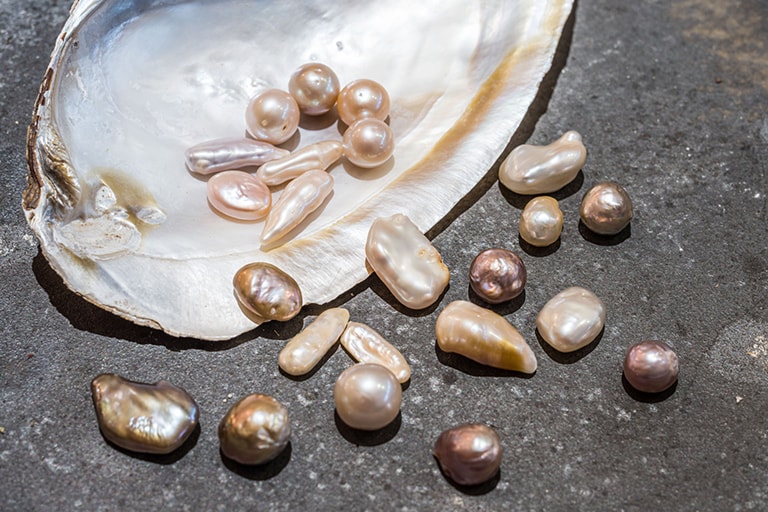
mother of pearl
(hyriopsis cumingii)
Anticonvulsant and sedative–hypnotic activity screening of pearl and nacre (mother of pearl)
Pearl and nacre are valuable traditional medicines to treat palpitations, convulsions or epilepsy in China for thousands of years. However, the active ingredients are not clear till now.
The main purpose of the current investigation was to assess the anticonvulsant and sedative–hypnotic activity of pearl powder and nacre powder, including their corresponding 6 protein extracts.
Determination of the amino acid composition of the obtained protein was carried out by ultra-performance liquid chromatography (UPLC) combined with 6-aminoquinolyl-N-hydroxysuccinimidyl carbamate (AQC) pre-column derivatisation. The influence of the tested drugs on locomotor activity and convulsions latency was recorded. The contents of 5-Hydroxytryptamine (5-HT) and γ-aminobutyric acid (GABA) in brain were detected by enzyme-linked immunesorbent assay (ELISA) kits. In addition, immunohistochemistry was carried out to evaluate the changes of 5-HT3 and GABAB. In parallel, the expressions of them were demonstrated by western blot.
The obtained data suggested that pearl original powder (1.1 g/kg), pearl water-soluble protein (0.2 g/kg), pearl acid-soluble protein (0.275 g/kg), pearl conchiolin protein (1.1 g/kg), nacre original powder (1.1 g/kg), nacre water-soluble protein (0.2 g/kg), nacre acid-soluble protein (0.7 g/kg) and nacre conchiolin protein (1.1 g/kg) could down-regulate the expression of 5-HT3 and up-regulate the level of GABAB to varying degrees compared with the control group. Besides, drug administration also reduced the locomotor activity and increased convulsions latency with a certain mortality.
These findings correlated with the traditional use of pearl and nacre as sedation and tranquilization agents, thus making them interesting sources for further drug development and also providing critical important evidence for the selection of quality control markers.
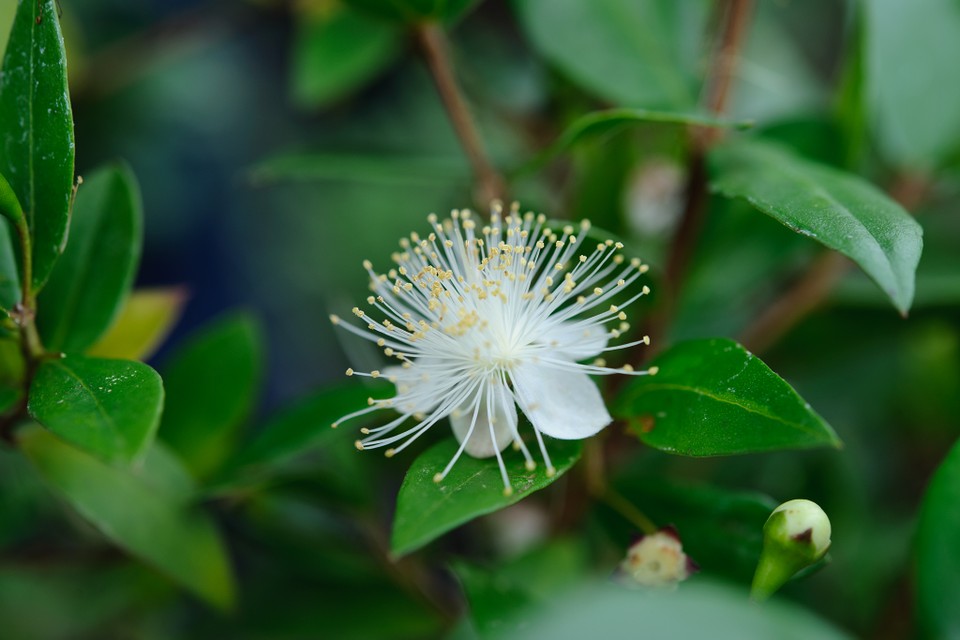
Myrtus communis
Hypnotic effect of the essential oil from the leaves of Myrtus communis on mice
This study, deploying different animal models of sedatives and hypnotics, significantly supports the Ethiopian traditional medicine claim that the EO of M. communis can be used as an adjunct for the treatment of insomnia. The EO of M. communis prolongs sleep duration and reduces sleep latency in mice, but it could not induce sleep by itself. In addition, the EO depresses CNS activity as shown from the negative results in the chimney and traction tests. EO of M. communis may be considered an alternative adjunct for treatment of insomnia (especially when it is associated with sleep maintenance problems), as it appears to be well tolerated in mice even at higher doses.
Ocimum basilicum
The present study showed that O. basilicum further enhances sleep behavior, confirming that this plant has a hypnotic action as claimed in traditional medicine. To our knowledge, this is the first pharmacological study showing the effects of the macerated extract of this plant on sleep duration and sleep latency. Also, this is the first work to determine the LD50 value for HAE of O. basilicum and to assess possible cytotoxicity of this extract on neuronal cells. Yet, results of this study are preliminary and need to be confirmed by further clinical trials.
The hypnotic assessment method was based on prolongation of sleep induced by pentobarbital, which is the most commonly used method for screening sedative–hypnotic agents (11–13). In agreement with the previously published works and as expected, diazepam significantly increased pentobarbital-induced sleeping time, indicating that our study method was optimized (17, 18). The effect of HAE of O. basilicum on sleep latency was lower than that of diazepam. However, the sleep-prolonging effect of HAE was comparable to that of diazepam, and, even at a dose of 50 mg/kg, HAE had a greater effect. Also, the hypnotic effect of HAE of O. basilicum is greater when compared with the effect of essential oil of O. basilicum reported by Ismail (4-fold and 2-fold increase in sleep duration, respectively) (7).
According to our results, the hypnotic effect of HAE was not dose-dependent in the range of given doses, and the maximum effect occurred with a dose of 50 mg/kg. Therefore, we used this dose to investigate the effects of different fractions of HAE. The fractions of HAE were prepared to obtain better insight into the nature of compounds responsible for the hypnotic effect of O. basilicum: 1, WF which extracts water-soluble constituents (e.g., glycosides, quaternary alkaloids, tannins); 2, EAF which extracts compounds of intermediate polarity (e.g., some flavonoids); and 3, NBF which extracts low polar agents (e.g., sterols, alkanes, and some terpenoids) (19, 20). Although WF, EAF, and NBF at a dose of 50 mg/kg were all able to increase sleep duration, not one of them could enhance sleep duration to the level induced by 50 mg/kg of HAE. Because HAE contains the active constituents of all the above-mentioned fractions, it can be concluded that an additive effect was caused by the interaction between these constituents when HAE was administrated. Therefore, both polar and non-polar constituents in O. basilicum extract are involved in the sleep-prolonging effect of this plant. Among WF, EAF, and NBF fractions, NBF not only induced the maximum prolongation of sleep duration, but also was the only fraction to induce a significant decrease in sleep latency. On the other hand, EAF failed to show any effect on sleep latency. Therefore, NBF contains a higher concentration of constituents responsible for the hypnotic effect of O. basilicum.
A wide variety of phytochemicals has been reported to have sedative–hypnotic effects. These include terpenoids (e.g., linalool, eugenol), flavonoids (e.g., quercetrin, luteolin), alkaloids (e.g., rosmarinic acid), steroids (e.g., beta-sitisterol), and saponins (21, 22). It has been shown that O. basilicum contains high amounts of linalool, eugenol, and rosmarinic acid (7). Linck and coworkers demonstrated that linalool increases barbiturate-induced sleeping time in mice (23). Similarly, the sleep-prolonging effect of eugenol was reported by Sharma et al. (22). Rosmarinic acid is found in methanolic extract of O. basilicum and can be isolated from the NBF of plant extracts (24, 25). It plays a major role in the sedative–hypnotic actions of some medicinal plants (26).
Several neurotransmitters are involved in the regulation of sleep behavior. Neurons located in the anterior hypothalamus release gamma-aminobutyric acid (GABA) to inhibit wake-promoting areas in the hypothalamus and brainstem (27, 28). Barbiturates such as pentobarbital act on the GABA receptor’s ionophore complex and favor the binding of GABA. Benzodiazepines such as diazepam increase the affinity of GABA for its receptor and thereby enhance pentobarbital-induced sleeping time (29). Consistent with this, we observed that pretreatment of mice with flumazenil decreases the sleep-prolonging effect of diazepam. Also, we found that flumazenil inhibits the hypnotic effect of O. basilicum extract. In agreement with our finding, Awad et al. reported that rosmarinic acid, which is found in the extract of O. basilicum, can act as a GABA transaminase inhibitor and therefore increases the brain level of GABA (30). Therefore, it is rational to suggest that the sleep-prolonging effect of O. basilicum is mediated, at least in part, through the potentiating of the GABAergic system. It is now accepted that some natural compounds interact with the GABAergic system to increase sleep behavior (31, 32).
The toxicity assay showed that the LD50 value for HAE of O. basilicum is 2.4 g/kg. This dose is far from its hypnotic doses (25 – 100 mg/kg). Also, HAE, even at high concentrations, did not decrease the viability of neuronal and fibroblast cells. Therefore, it seems that the hypnotic effect of O. basilicum is not accompanied by neurotoxicity.
In conclusion, present data demonstrated that the macerated extract of O. basilicum potentiates sleeping behaviors without any cytotoxicity. The compounds responsible for this effect are mainly found in NBF. Isolation of the active compounds may yield a novel sedative–hypnotic agent.
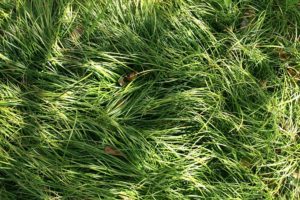
Ophiopogon Japonicus
Objective To observe the sedative and hypnotic effects of ophiopogon japonicus in mice.Methods The spontaneous motor activity test and the hypnotic synergism test by threshold and sub-threshold dosage of pentobarbital sodium were employed to evaluate the central pharmacological effect of ophiopogon japonicus.Results Compared with normal saline group,High-dose ophiopogon japonicus could inhibit the spontaneous motor activity and prolong the sleep time of pentobarbital sodium at threshold dosage in mice.There was significant difference between the two groups Conclusion Ophiopogon japonicus has an obvious function of sedation.
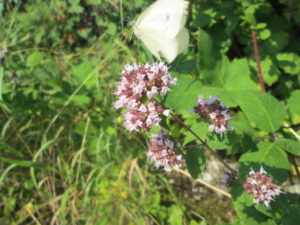
Origanum Majorana extract
The Anxiolytic and Hypnotic Effects of Origanum majorana
Background and Aim: Previous studies have reported several pharmacological properties, including anticonvulsant, analgesic, sedative, and antidepressant-like effects, for Origanum majorana. Likewise, the aim of the present study was to compare the anxiolytic and hypnotic properties of Origanum majorana essential oil (OMEO) and alprazolam in male mice. Materials and Methods: In this experimental research, 60 male NMRI mice were divided into 10 groups of six mice. In both of the experiments, negative control groups received vehicle (10 ml/kg), positive control groups received alprazolam (0.5 mg/kg), and treatment groups received OMEO (10, 20 and 40 mg/kg). For assessing the anxiolytic effects, the elevated plus maze (EPM) test was used to record the number of entries and the time spent in the open and closed arms. Moreover, the onset and duration of the sleep were recorded by the use of ketamine-induced sleeping time test in order to evaluate the hypnotic effects. Finally, one-way ANOVA, and subsequently post hoc Tukey’s test were utilized to carry out the statistical analysis. Results: All doses of OMEO and alprazolam, compared to the control group, raised the number of entries and the time spent in the open arms and, conversely, decreased the number of entries and the time spent in the closed arms. Furthermore, similar to alprazolam, all doses of the essential oil reduced the onset of sleeping and raised the duration of sleep. Conclusion: The results indicated that the OMEO could have anxiolytic and hypnotic effects.
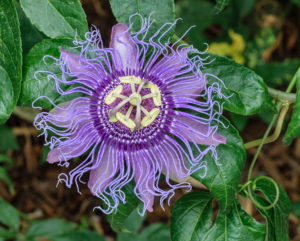
Passiflora incarnata L.
Effect of a medicinal plant (Passiflora incarnata L) on sleep
Extracts of the plant Passiflora incarnata L. (Passifloraceae) were administered intraperitoneally in order to test its effects on sleep.
Experiments were carried out on chronically implanted male adult wistar rats to obtain cerebral (EEG), ocular (EOG) and muscular (EMG) activities throughout their states of vigilance. Polygraphic recordings were taken during 9 continuous hours before and after the extract administration (500 mg/kg).
Passiflora incarnata induced a significant increment in the total sleep time (p<0.05). This increment was due to an increase in the time spent by animals in slow wave sleep (SWS). Concomitantly, a significant decrement in wakefulness (W) was observed (p<0.05). In contrast, time spent in rapid eye movement (REM) sleep showed a decreasing tendency, since both its frequency and mean duration were reduced.
The extracts obtained from Passiflora incarnata can be considered as appropriated sleep inducers.
The employment of vegetable products may be an adequate approach for insomnia treatment. Previous studies indicate that the plant Valeriana officinalis L. has been utilized for treatment of insomniac patients. Subjective analysis indicates a shortening of the sleep latency, a decrease in number of awakenings through the night and feelings of having a repairing sleep after administration of the extracts of this plant14.
Behavioral studies using other plants indicate that Tilia tormentosa and Passiflora officinalis are able to induce sleep in a way similar to that under physiological conditions15.
Extracts from passion flower (Passiflora incarnata) have been used in patients to reduce anxiety and insomnia13. This has been corroborated by mean numerous behavioral studies in rodents which demonstrate a reduced anxiety and stress with passion flower treatment16. However, slight effects were observed on total times of non-REM sleep and REM sleep when administered in sleep-disturbed model rats17.
The results obtained in this experimental work by means of electrophysiological techniques support the behavioral observations related to the hypnotic effects induced by the administration of extracts from Passiflora incarnata18. The used experimental approach allowed us to determine the precise state of vigilance affected by this extract. Similarly, we were able to quantify the intensity of the effect.
In this way, it was evidenced that Passiflora incarnata increases significantly the time spent by animals in SWS while that of REM sleep showed a tendency to diminish. The decrement of REM sleep after administering the extract of Passiflora incarnata was due to a decrease in the occurrence of this sleep phase, as well as to a reduction in its average duration. These effects may indicate that the tested extract exerts a facilitatory action on the regulating mechanisms of SWS and, at the same time, an inhibitory action on those related to REM sleep.
Although the anxiolytic and hypnotic activities of Passiflora species has been repeatedly evaluated in the past few years, there is only limited information on the mechanism of action. Some reports have speculated about its effects on the GABA system, but investigations concerning the mechanism are still lacking.
It has been described that numerous pharmacological effects of Passiflora incarnata are mediated via modulation of the GABA system including affinity to GABAA and GABAB receptors, and effects on GABA uptake19.
It is very likely that binding to the GABA-site of the GABAA receptor is one of the clinically relevant modes of action of Passiflora incarnata extract.
Because preadministration of flumazenil (Ro 15-1788), an antagonist of the benzodiazepine binding site of the GABAA receptor, attenuates the effects of Passiflora incarnata in vivo.
Another possible target might be the binding of Passiflora incarnata extract to the GABAB receptor. There is accumulating evidence that modulators of the GABAB receptor might act as an anxiolytic, although the compounds responsible for the hypnotic activity of Passiflora incarnata are yet to be identified. However, it is probable that the hypnotic activity could be exerted by the flavonoids chrysin and/ or homoorientin, orientin, vitexin, and isovitexin20, compounds isolated from Passiflora incarnata extracts which have shown a significant anxiolytic effect mediated via the GABAergic system.
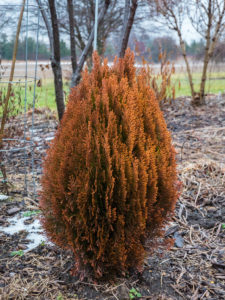
Platycladus orientalis SEMEN
Objective To observe the effect of semen platycladi saponins and semen platycladi oil on the numbers of mice and sleep time under subliminal hypnosis and investigate the pharmacodynamic effect of the two components of semen platycladi.Methods Kunming mice of 18~22 g,according to weight and gender balance,were randomized into blank control group,semen platycladi saponins groups of high,middle and low dose;and semen platycladi oil groups of high,middle and low dose,totally 7 groups.After continuous medications for 10 days,the numbers of slept mice,and hypnotic time under threshold were observed;and the prolonged time of sleep was calculated in mice of each group.Results The numbers of slept mice in semen platycladi saponins group of high dose increased apparent,but those in the group of middle and low doses did not increased apparently.The numbers of slept mice in semen platycladi oil groups of three doses all increased to different extents,of which,the increase in the groups of middle and low doses were apparent and the improvement in high-dose and low-dose groups were similar.The sleep time was extended apparently in semen platycladi saponins group of high dose group and that in the groups of middle and low dose was weak relatively.The sleep time was extended apparently in semen platycladi oil group of low dose group and that in the groups of high and middle dose was weak relatively.Conclusion Semen platycladi saponins and semen platycladi oil all have sedative and hypnotic effects.The sedative and hypnotic effect is strengthened with the increase of semen platycladi saponins dose to a certain extent.The sedative and hypnotic effect of semen platycladi oil increases at a lower concentration,but when the concentration increasing,the pharmacodynamic effect of semen platycladi oil deceases.
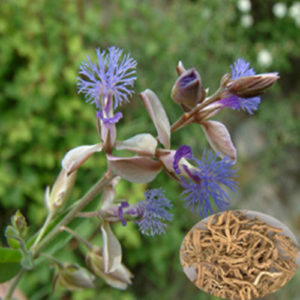
Polygala tenuifolia Wild extract
Anxiolytic and sedative–hypnotic activities of polygalasaponins from Polygala tenuifolia
In the present study, the anxiolytic and sedative–hypnotic activities of polygalasaponins extracted from Polygala tenuifolia Willdenow (Polygalaceae) were determined in mice using hole-board, elevated plus maze, open field, and sodium pentobarbital-induced hypnosis tests. Moreover, the acute toxicity of polygalasaponins was also estimated in mice. Sixty minutes after p.o. administration of polygalasaponins (40, 80, 160 mg/kg) in mice, the central crossing counts and percentage of central/total ambulation significantly increased and the number of rearings and defecations was evidently inhibited in the open field test. Polygalasaponins also increased the head-dips of mice in the hole-board test and the time spent by mice in the open arms of the X-maze, prolonged sleep duration and shortened sleep latency in the test of synergetic effect on sodium pentobarbital (45 and 25 mg/kg, respectively). Acute toxic study showed the oral median lethal dose (LD50) of polygalasaponins was 3.95 g/kg and 0% lethal dose 2.6 g/kg. These results suggest that polygalasaponin possesses evident anxiolytic and sedative–hypnotic activities and has a relatively safe dose range, which supports the use of Polygala tenuifolia root as an anxiolytic and sedative–hypnotic drug in folk medicine.
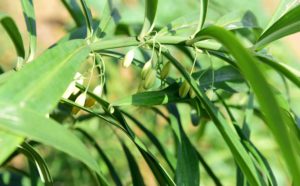
Polygonatum sibiricum extract
Polygonatum sibiricum rhizome promotes sleep by regulating non-rapid eye movement and GABAergic/serotonergic receptors
The aim of this study is to investigate the sleep-promoting effect of a water extract of the Polygonatum sibiricum rhizome (PSE) in rodent models. PSE contained oleamide (0.10 mg/g extract) and glyceryl monolinoleate (0.17 mg/g extract), which are recognized as sleep-promoting substances. In pentobarbital-induced sleep model at hypnotic level, PSE (160 mg/kg) administration significantly decreased sleep latency time by 29% (2.7 min) and increased sleep duration time by 70% (68.4 min) compared with the normal control (3.8 min and 40.7 min, respectively). In the electroencephalography (EEG) analysis of rats, PSE-mediated sleep promotion accompanied the change of sleep architecture including increase of non-rapid eye movement (NREM) and decrease of REM. This sleep promoting effect was more obvious in caffeine-induced awakening model; total sleep time was increased by 40% along with increased NREM by PSE treatment at 160 mg/kg. In addition, PSE significantly increased the protein and mRNA levels of GABAA-R2 and 5-HT1A receptor, the major sleep-related neurotransmitter receptors. Furthermore, glyceryl monolinoleate and oleamide effectively bound to GABAA receptor in a competitive binding assay. These results indicate that PSE-mediated sleep-promoting effect is associated with the extension of NREM and upregulation of GABAA-R2 and 5-HT1A, and is mediated by binding to the GABAA receptor in vertebrate models.
The aim of this study was to identify sleep-promoting substance from Polygonatum sibiricum rhizome extract (PSE) with the regulation of sleep architecture. PSE showed a decrease in sleep latency time and an increase in the sleeping time. In the electroencephalography analysis of rats, PSE (150 mg/kg) showed an increase of non-rapid eye movement by 38% and a decrease of rapid eye movement by 31% compared to the control. This sleep-promoting activity was found to be involved in the GABAA-BDZ receptor. The chemical structure of the pure compound was determined by the 1H and 13C nuclear magnetic resonance spectroscopy and gas chromatography mass spectrometry analysis; active compound was glyceryl-1-monolinoleate. The commercial standard glyceryl-1-monolinoleate showed a similar inhibitory concentration on [3H]-flumazenil binding to GABAA-BDZ receptors with final active fraction of PSE. The results indicate that glyceryl-1-monolinoleate is a major active compound responsible for the PSE-derived sleep promotion.
Efficacy of Polygonatum sibiricum on Mild Insomnia: A Randomized Placebo-Controlled Trial
Polygonatum sibiricum (PS) rhizome, which contains glyceryl-1-monolinoleate as its primary active component, has been shown to improve insomnia in animal models. Based on these findings, we aimed to investigate the safety and efficacy of PS rhizome extract in improving sleep quality in individuals with mild insomnia. Eighty individuals with mild insomnia were enrolled in a four-week, randomized, double-blind, placebo-controlled trial of PS rhizome extract (500 mg/day, n = 40, PS group) or placebo (n = 40, placebo group). The primary outcome measure was change in total score on the Athens Insomnia Scale (AIS) to indicate sleep quality. The secondary outcome measures included change in actigraphy data and perfusion levels in the brain regions within the default mode network (DMN), which is known to play a key role in insomnia. The PS group showed greater improvement in the total AIS score with a significant increase in total sleep time, relative to the placebo group. In addition, significant group-by-visit interactions were observed in the perfusion level of the medial prefrontal cortex within the DMN. Findings of the current study provide first evidence that PS rhizome extract could be an effective natural ingredient for improving sleep in mild insomnia using a human model.
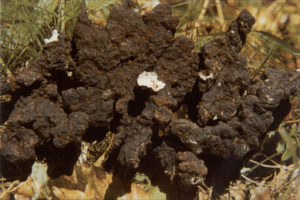
Poria cocos
Objectve Study on the sedative–hypnotic effect of Poria cocos and Fushen water decoction.Methods Straightforward hypnosis experiment,pentobarbital sodium-induced sleep and anticonvulsive experiments were made to observe the effects of Poria cocos and Fushen water decoction on sedation and hypnosis in mice.Results The Poria cocos and Fushen water decoction showed a weak role of Straightforward hypnosis,but significantly increased the ratio of sleeping which was caused by pentobarbital sodium,and protracted the sleeping time except low dose group of the Poria cocos water decoction.Besides,Fushen group showed some anticonvulsant action only.Conclusion The Poria cocos and Fushen water decoction have some sedative-hypnotic action,and the Fushen has more obvious effects than the Poria cocos.
Objective:To study the effects of Poria cocos on improving learning and memory and its sedative and hypnotic effect. Methods:Morris water maze test and coordination function with pentobarbital sodium were used to evaluate the improvment of learning and memory and sedative and hypnotic effect. Results:The decoction of Poria cocos in high-dose and medium-dose can both shorten latency in acquired learning and memory disorders induced by pentobarbital sodium within 2 min significantly and can increase the time and travel within the platform quadrant of pool significantly;high-dose group can increase sleeping time and the number of sleeping mice and also can improve sleeping rate significantly. Conclusion:Poria cocos can improve mice’s learning and memory dysfunction induced by pentobarbital sodium,and is effective in inducing sedative and hypnotic effects.
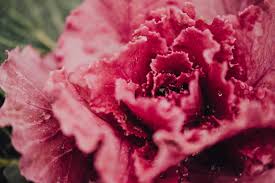
Red Cabbage (Brassica oleracea)
Hypnotic Effect of Red Cabbage (Brassica oleracea) on Sleep
Insomnia is defined as repeated difficulty in falling asleep, difficulty maintaining sleep, and/or experiencing low-quality sleep, which results in some form of daytime disturbance.[1] Low sleeping leads to mental problem and fatigue. According to recent reports, 45% people suffer from sleeping disorder; this problem is higher in women than men.[2] There are some drugs such as benzodiazepines and antihistaminic agents that are used for inducing sleep.[2] γ -Aminobutyric acid receptor A (GABAA) is an important target for sleep-inducing drugs.[3] However, they are not suitable for long-time administration because of their tolerance-related issues and dependence.[4] There is a need to find new hypnotic drugs with lower adverse effects. Natural products have always been good sources for developing new treatments for the management of several diseases.[5] Some of the herbs that are used in insomnia include Humulus lupulus, Ziziphus jujuba (sour date), Valeriana officinalis, Passiflora incarnata (passion flower), Eschscholzia californica (California poppy), Piper methysticum, and Lactuca sativa.[6,7,8,9] The red cabbage (Brassica oleracea var. capitata f. rubra) belongs to Brassicaceae family (order: Brassicales).[10] Red cabbage is a cheap source of anthocyanin pigment.[11] Red cabbage contains flavonoids, and recent studies have shown that flavonoids have good therapeutic effects.[10] The pharmacological effects of red cabbage include reducing oxidative stress, decreasing blood glucose,[12,13,14] possessing anticancer properties,[15,16,17] and reducing blood cholesterol.[18] In some traditional medicinal books, it is reported that red cabbage has sedative–hypnotic effect.[19] There is no pharmacological report about the hypnotic effect of red cabbage. Therefore, this study has been designed to evaluate the sleep-prolonging effect of red cabbage extract and its different fractions. Also, flumazenil was used to guess possible sleep mechanism.
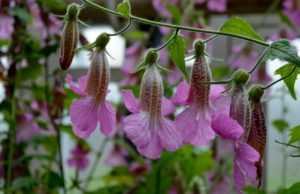
Rehmannia glutinosa (Gaetn.) Libosch.
The pharmacological effect of rehmannia glutinosa on the centrol nervous system was investigated. The results show that the rehmannia glutinosa can inhibit the automatic activity of the mouse, strengthen the depressant effect of pentobarbital sodium and thiopentone sodium to the centrollnervous system, antagonize the centrol stimulation of caffein to mouse. But it can not antagonize the convulsion of cardiazol and strychnine. The experiment shows that the rehmannia glutinosa possesses a sedative effect.
Objective To reseach the hypotensive and sedative and anti-inflammatory actions of HuaiQing radix rehmanniae.Methods The animal expriments had been carred out by different extractes from of HuaiQing of radix rehmanniae with extracting methods of other,alcohol and water to observe theirs pharmacologic actions.The aqueous extract had been disseiated from neuter,acid and alkaline parts to analysis theirs effective part.Results The aqueous extract of HuaiQing radix rehmanniae showed markedly the wypotensive,sedative and anti-inflammatory actions (P0.01),but the ethereal and alcoholic extracts had not these actions.The acid part of the aqueous extract had the actions ([WT5”BX〗P0.05),asindicated above the neuter and alkaline partr had not obvionsly([WT5”BX〗P0.05).The acid part of the aqueous extract in clude mainly glycocides,alkaloids and phos phoric acid et al.Conclusion The effective composition of HuaiQing radix rehmanniae in hy potensive,sedative and anti-inflammatory actions coexist in the acid part of the aqueous extract.
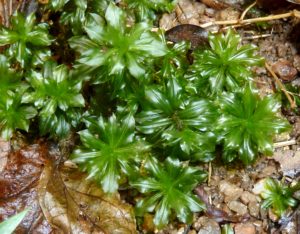
Rhodobryum ontariense
Sedative and anxiolytic-like activities of the moss Rhodobryum ontariense
Abstract : This is the first study designed to explore behavioral effects of the water extract of the moss Rhodobryum ontariense (ROE). Experimental adult animals received intraperitoneal injections of ROE (50-400 mg/kg; vs. saline) 45 min before behavioural evaluation. Motor effects of ROE were estimated in male mice using the open field test (OFT), whereas the elevated plus maze (EPM) model of anxiety was applied on male rats. Single ROE treatments significantly decreased motor activity of mice in OFT (p<0.001) by reducing both the percentage of activity time and the distance travelled in 15 min. Also, ROE in rats significantly increased (p<0.05) the percentage of time spent in open arms and the number of open-arm-entries during 5 min, which was similar to the actions of diazepam in rats (1 mg/kg). These results demonstrated that ROE produced motor sedation and anxiolytic-like effects in rodents.
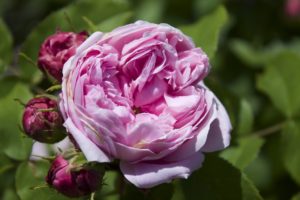
Rosa damascena
Hypnotic Effect of Rosa damascena
Rosa damascena (Rosaceae) has been found to act on central nervous system including the brain. Several studies confirm that Rosa damascena inhibits the reactivity of the hypothalamus and pituitary systems in rat and can suppress the reactivity of central nervous system. In traditional medicine the hypnotic effect of rose is also suggested. In the present study hypnotic effect of ethanolic, aqueous and chloroformic extracts of Rosa damascena was investigated in mice. Hypnotic method was based on potentiation of pentobarbital induced sleeping time by extracts. Three doses of extracts (100, 500 and 1000 mg/kg) were injected intraperitoneally in comparison with diazepam (3 mg/kg) as the positive control and saline as the negative control. Thirty min after injection of extracts, pentobarbital (30 mg/kg) was injected and any increase in the sleeping time due to the extracts was recorded. Results showed that the ethanolic and aqueous extracts in doses of 500 and 1000 mg/kg significantly increased the pentobarbital induced sleeping time (P<0.001, compared to the negative control), which was comparable to diazepam.
Rosa damascena as holy ancient herb with novel applications
Rosa damascena as an ornamental plant is commonly known as “Gole Mohammadi” in Iran. Iranian people have been called this plant, the flower of Prophet “Mohammad”. R. damascena is traditionally used for treatment of abdominal and chest pains, strengthening the heart, menstrual bleeding, digestive problems and constipation.
This paper reviews the ethnopharmacology, phytochemistry and pharmaceutical investigations on R. damascena.
All relevant databases and local books on ethnopharmacology of R. damascena were probed without limitation up to 31st March 2015 and the results of these studies were collected and reviewed.
R. damascena has an important position in Iranian traditional medicine. It is economically a valuable plant with therapeutic applications in modern medicine. The antimicrobial, antioxidant, analgesic, anti-inflammatory, anti-diabetic and anti-depressant properties of R. damascena have been confirmed. Citronellol and geraniol as the main components of R. damascena essential oil are responsible for pharmacological activities.
Overall, R. damascena as holy ancient plant with modern pharmacological investigations should be more investigated as traditional uses in large preclinical and clinical studies.
CNS DEPRESSANT EFFECT OF THE CRUDE ETHANOLIC EXTRACT OF THE FLOWERING TOPS OF ROSA DAMASCENA
The ethanolic extract of the flowering tops of Rosa damascena (Rosaceae) was assessed for effect on the central nervous system (CNS) using a number of neuropharmacological experimental models in mice. The extract produced a dose-dependent reduction of the onset and duration of pentobarbitone-induced hypnosis, reduction of locomotor and exploratory activities in the open field, hole cross tests. At the same dose levels, the extract dose-dependently inhibited acetic acid-induced writhing in mice. These results suggest that the extract possess CNS depressant activity.
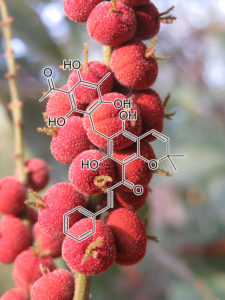
Rottlerin
(Mallotus philippinensis)
Pharmacological evaluation of Mallotus philippinensis (Lam.) Muell.-Arg. fruit hair extract for anti-inflammatory, analgesic and hypnotic activity
Insomnia is a sleep disorder which mainly perception or complaint of inadequate or poor-quality sleep due to various psychological and physical disorder. Sedatives are the drugs which calm the central nervous system (CNS) and have a relaxing effect. Sedatives at higher doses usually cause sleep; they can be defines as hypnotics. The basic difference between sedatives and hypnotics is the amount of the dose; calming effect achieved at low dose while sleep at a higher dose. Recent studies have shown that herbal drugs exert good sedative and hypnotic effect on the CNS [13,14].
Our experimental laboratory and research group have been engaged in the identification of various herbal plants for the anti-inflammatory, analgesic and hypnotic activity using anti-inflammatory, analgesic and hypnotic experimental animal models. This study evaluates the anti-inflammatory, analgesic and hypnotic potentiation of MPE against various animal experimental models. These activities are important for any ulcer healing property including wounds as anti-inflammatory activity would help in decreasing wound inflammation, while analgesic and hypnotic activity would reduce the reaction to pain and cause euphoria.
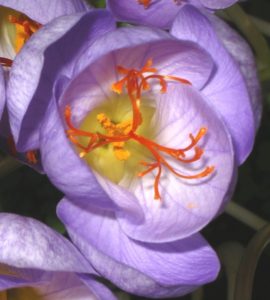
Saffron stigma
Saffron stigma (Crocus sativus L.) is used for insomnia and anxiety in traditional medicine. In this study, the anxiolytic and hypnotic effects of saffron aqueous extract and its constituents, crocin and safranal, were studied in mice. Agents were administered intraperitoneally in mice before the experiments for the evaluation of hypnotic activity (induced by sodium pentobarbital, 30 mg/kg, i.p.), anxiolytic activity (elevated plus maze test), locomotor activity (open field test) and motor coordination (Rotarod test). The aqueous extract reduced the locomotor activity dose dependently. At low doses, saffron showed a significant increase in the time on the open arms of the maze. When using the Rotarod method, the aqueous extract showed considerable effect on motor coordination of the mice. In the hypnotic test, only a dose of 0.56 g/kg of saffron increased the total sleep. Crocin showed no anxiolytic, hypnotic or myorelaxation effects. Safranal, in higher doses, 0.15 and 0.35 mL/kg, showed anxiolytic effects. Safranal increased the total sleep time dose dependently. This constituent at lower doses (0.05 and 0.15 mL/kg) decreased some locomotion activity parameters. Safranal demonstrated no effects on motor coordination. The results showed that saffron aqueous extract and safranal have anxiolytic and hypnotic effects.
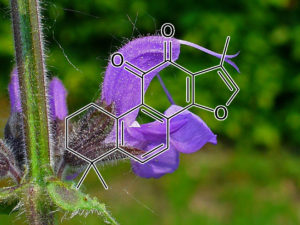
Salvia miltiorrhiza
Pharmacological studies on the sedative–hypnotic effect of Semen Ziziphi spinosae (Suanzaoren) and Radix et Rhizoma Salviae miltiorrhizae (Danshen) extracts and the synergistic effect of their combinations
Semen Ziziphi spinosae (Suanzaoren in China) and Radix et Rhizoma Salviae miltiorrhizae (Danshen in China) are conventional herbal drugs in traditional Chinese medicine and have been used widely for the treatment of insomnia. In the present study, the sedative–hypnotic activity of the active fractions extracted from Suanzaoren and Danshen were studied using the method of pentobarbital-induced sleep in the mouse model. Qualitative analysis of the standardized extracts was carried out by HPLC-DAD. The results showed that the water extract of Suanzaoren (SWE) (400 and 800 mg/kg body wt.) and the ether extract of Danshen (DTT) (300 and 600 mg/kg body wt.) can shorten sleep latency significantly, increase sleeping time and prolong movement convalescence time induced by sodium pentobarbital (55 mg/kg body wt.) administration in mice. Furthermore, the combination of SWE and DTT showed significant synergistic effect (p<0.05) in decreasing sleep latency and increasing sleeping time, but not in prolonging the movement convalescence time, which might be helpful for energy recovery in the treatment of insomnia. The results suggest that SWE, DTT, and the combination of SWE and DTT possess significant sedative–hypnotic activity, which supports the popular use of Suanzaoren and Danshen for treatment of insomnia and provide the basis for new drug discovery. Furthermore, the results demonstrate that the combination of SWE and DTT may be preferable for the treatment of insomnia.
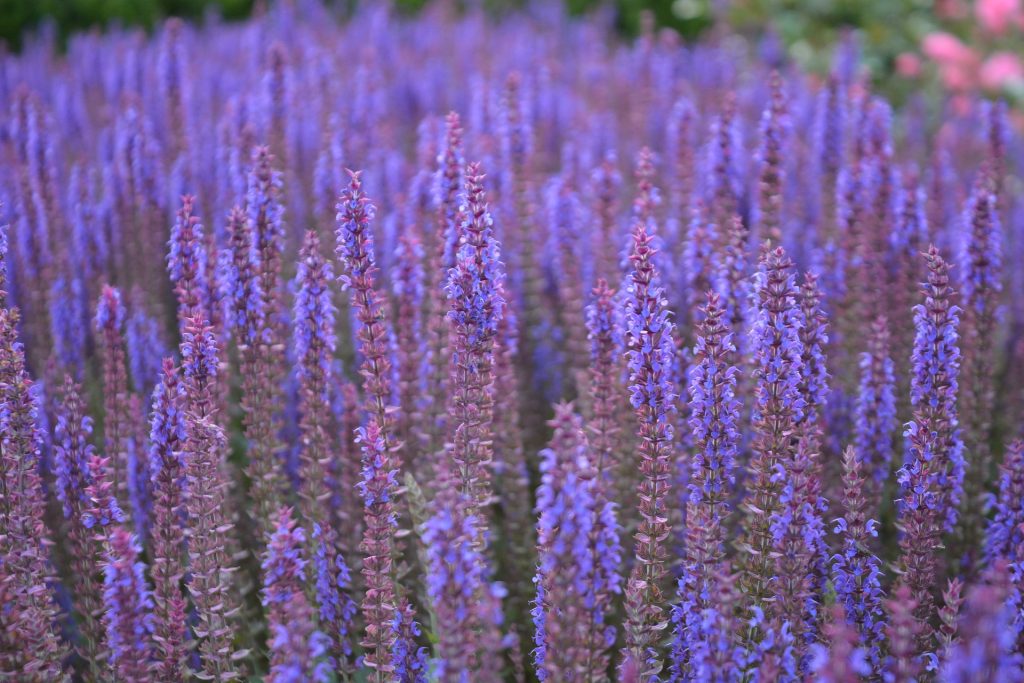
Salvia reuterana
Hypnotic Effect of Salvia reuterana Boiss for Treatment of InsomniaBackground: Insomnia, which is difficulty in initiating and maintaining sleep, is a very common experience for many people. Considering the increasing interest in medicinal plants in the past decade, many plants such as Coriandrum sativum, Salvia leriifolia, Salvia reuterana and Stachys lavanduli folia have been used in Iranian traditional medicine to abate insomnia. Objective: The present study was designed to investigate hypnotic effect of Salvia reuterana on male mice. Methods: Ethanolic extract of S. reuterana was prepared. Five groups of 6 animals each were pretreated with vehicle, Salvia extract (50, 100 and 250 mg/kg; i.p.) or diazepam (0.5mg/kg; i.p.) 30 minutes before ketamine injection (100 mg/kg, i.p.). Results: The latency and total sleeping times were recorded to determine the hypnotic effect of the extract. The results indicated that ethanolic extract of S. reuterana, reduced the latency time and induced the total sleeping time in a dose dependent manner, compared to saline group. Conclusion: The present study suggests that S. reuterana produces hypnotic effect which can be evaluated clinically.
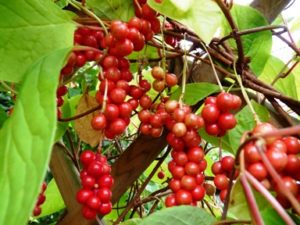
Schisandra chinensis
UFLC–MS/MS method for simultaneous determination of six lignans of Schisandra chinensis (Turcz.) Baill. in normal and insomniac rats brain microdialysates and homogenate samples: towards an in‐depth study for its sedative‐hypnotic activity
Schisandra chinensis (Turcz.) Baill., a traditional Chinese medicine, has been clinically used for the treatment of insomnia for centuries. The insomnia mechanism and the possible active ingredients of S . chinensis remain largely unknown. The objective of this study was to develop a method to detect its components which could pass through the blood brain barrier (BBB) by determining the brain microdialysate and brain tissue homogenate samples and then obtain the pharmacokinetic profile in brain for comprehensive understanding of its hypnotic clinical efficacy. Therefore, an efficient, sensitive and selective ultra fast liquid chromatography/tandem mass spectrometry method for the simultaneous determination of six sedative and hypnotic lignans (schisandrin, schisandrol B, schisantherin A, deoxyshisandrin, γ‐schisandrin and gomisin N) of Schisandra chinensis (Turcz.) Baill. in rat brain tissue homogenate and brain microdialysates has been developed and validated. The analysis was performed on a Shim‐pack XR‐ODS column (75 mm × 3.0 mm, 2.2 µm) using gradient elution with the mobile phase consisting of acetonitrile and 0.1% formic acid water. The method was validated in brain homogenate and microdialysate samples, which all showed good linearity over a wide concentration range (r2 > 0.99), and the obtained lower limit of quantification was 0.1 ng · ml−1 for the analytes in brain microdialysate samples. The intra‐ and inter‐day assay variability was less than 15% for all analytes. The study proved the six lignans, as sedative and hypnotic ingredients, could pass through the BBB with brain targeting, distributed mainly in the hypothalamus and possessed complete pharmacokinetics process in brain. The results also indicated that significant difference in pharmacokinetic parameters of the analytes was observed between two groups, while absorptions of these analytes in insomniac group were significantly better than those in normal group.
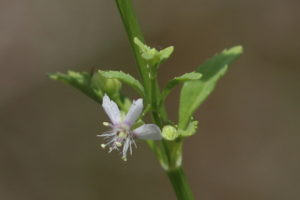
Scoparia dulcis Linn.
Scoparia dulcis Linn. (SD) is a perennial herb that has been well studied for its antioxidant, anti-inflammatory, antidiabetic, and hepatoprotective effects. However, scientific information on SD regarding the neuropharmacological effect is limited. This study evaluated the sedative and hypnotic effect of the ethanolic extract of whole plants of Scoparia dulcis (EESD). For this purpose, the whole plants of S. dulcis were extracted with ethanol following maceration process and tested for the presence of phytochemical constituents. The sedative and hypnotic activity were then investigated using hole cross, open field, hole-board, rota-rod, and thiopental sodium-induced sleeping time determination tests in mice at the doses of 50, 100, and 200 mg/kg of EESD. Diazepam at the dose of 1 mg/kg was used as a reference drug in all the experiments. We found that EESD produced a significant dose-dependent inhibition of locomotor activity of mice both in hole cross and open field tests (). Besides, it also decreased rota-rod performances and the number of head dips in hole-board test. Furthermore, EESD significantly decreased the induction time to sleep and prolonged the duration of sleeping, induced by thiopental sodium. Taken together, our study suggests that EESD may possess sedative principles with potent hypnotic properties.
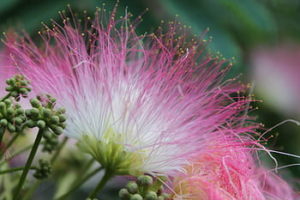
Silktree Albizia Bark extract
Hypnotic effects and binding studies for GABAA and 5-HT2C receptors of traditional medicinal plants used in Asia for insomnia
Many medicinal plants have been used for treatment of insomnia in Asia. However, scientific evidence and precise mechanism for their sedative–hypnotic activity have not been fully investigated. Thus, we investigated the binding activity of the oriental plant extracts (mainly from Korea and Japan) to the well-known molecular targets for sleep regulation, GABAA and 5-HT2C receptors. Following the binding assay, sedative–hypnotic effects of the extracts with high affinity were examined in an animal model of sleep.
Aqueous and ethanol extracts of 15 medicinal plants were tested for binding at the benzodiazepine site of GABAA receptor and 5-HT site of 5-HT2C receptor. The sedative–hypnotic effects of selected extracts were evaluated by measuring the sleep latency and sleep duration during pentobarbital-induced sleep in mice after oral administration of extracts.
In the GABAA assay, the ethanol extracts of licorice and danshen displayed concentration-dependent, high affinity binding, whereas in the 5-HT2C assay, the ethanol extracts of ginseng and silk tree showed high affinity. Among these extracts we tested previously uncharacterized licorice and silk tree for hypnotic effects. We found the ethanol extracts of licorice and silk tree significantly decreased sleep latency and increased sleep duration in pentobarbital-induced sleep.
We demonstrate for the first time that licorice and silk tree have the sedative–hypnotic activity possibly by modulating GABAA and 5-HT2C receptors. We propose that licorice and silk tree might be effective candidates for treatment of insomnia.
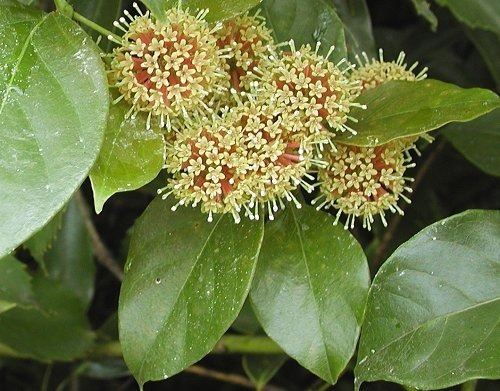
Uncaria rhynchophylla
Rhynchophylline Enhances Rapid Eye Movement Sleep
Insomnia can be defined as the inability to initiate or maintain sleep. It is also one of the most common health problems in modern society. Furthermore, chronic insomnia disturbs daily sleep and causes diverse problems in daily living such as chronic fatigue, decreased work efficiency, lack of alertness, and poor cognitive abilities. Over the last decade, scientists have shown increased interest in herbal medicines, which contain phytochemicals that promote health. Many herbs such as St, John’s wort, kava kava, valerian, and passion flower have been introduced in European countries.1 Herbs as sleep aids are becoming more popular as alternative medicines. γ-Aminobutyric acid (GABA), the main inhibitory neurotransmitter of the central nervous system (CNS), is the most prevalent target for treating insomnia. It is well established that activation of GABAA-ergic neurons plays an important role in sleep. Glutamic acid decarboxylase (GAD65/67), an enzyme responsible for the synthesis of GABA also plays a crucial role in sleep. On the other hand, GABA is released to the synapse, the extracellular space between the neurons. The GABAA receptors complex consists of a Cl− ionophore principally coupled to GABA, barbiturate, benzodiazepine, steroid, and picrotoxin binding sites.2,3 Basic subunits are composed to α (1~6), β (1~3) and γ (1~3).4 These binding sites trigger the chloride channel’s opening with resulting membrane hyperpolarization 5. GABAA-ergic drugs have induced sedative–hypnotic effects in animals and humans.6 Rhynchophylline (RP, Fig. 1) is a major tetracyclic oxindole alkaloid from the Uncaira species, which has been long used medicinally. Recently, it has been reported that RP attenuates ischemia-induced neuronal damage in the hippocampus by the noncompetitive antagonistic effect of N-methly-D-aspartate (NMDA). Moreover, RP reduced kainic acid-induced epileptic seizure. The Uncaira species has been traditionally used to treat neurological disorders such as seizures, pain, and anxiety in the oriental countries7. We are interested in whether RP enhances pentobarbital-induced sleeping behaviors and modulates sleep architecture because it has shown neuroprotective and inhibitory pharmacological effects on the CNS 8, 9, 10. Furthermore, the possible mechanisms of RP as a candidate for insomnia treatment are suggested from these experiments.
Alkaloid fraction of Uncaria rhynchophylla protects against N-methyl-d-aspartate-induced apoptosis in rat hippocampal slices
Uncaria rhynchophylla is a medicinal herb which has sedative and anticonvulsive effects and has been applied in the treatment of epilepsy in Oriental medicine. In this study, the effect of alkaloid fraction of U. rhynchophylla against N-methyl-d-aspartate (NMDA)-induced neuronal cell death was investigated. Pretreatment with an alkaloid fraction of U. rhynchophylla for 1 h decreased the degree of neuronal damage induced by NMDA exposure in cultured hippocampal slices and also inhibited NMDA-induced enhanced expressions of apoptosis-related genes such as c-jun, p53, and bax. In the present study, the alkaloid fraction of U. rhynchophylla was shown to have a protective property against NMDA-induced cytotoxicity by suppressing the NMDA-induced apoptosis in rat hippocampal slices.
Protective Effect of Methanol Extract of Uncaria rhynchophylla Against Excitotoxicity Induced by N-Methyl-D-Aspartate in Rat Hippocampus
Uncaria rhynchophylla is a medicinal herb used for convulsive disorders in Oriental medicine. In this study, the effect of the methanol extract of Uncaria rhynchophylla against N-methyl-D-aspartate (NMDA)-induced excitotoxicity was investigated. Pretreatment with the extract of Uncaria rhynchopylla reduced the degree of neuronal damage induced by NMDA exposure in cultured hippocampal slices. In the patch clamp study, Uncaria rhynchophylla significantly inhibited NMDA receptor-activated ion current in acutely dissociated hippocampal CA1 neurons. These results indicate that Uncaria rhynchophylla offers protection against NMDA-induced neuronal injury and inhibitory action on NMDA receptor-mediated ion current may be a mechanism behind the neuroprotective effect of Uncaria rhynchophylla.
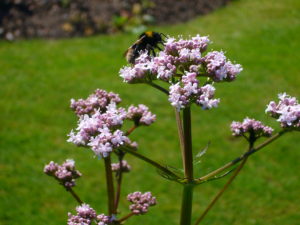
Valeriana officinalis L
The effect of an aqueous extract of valerian (Valeriana officinalis L.) root on subjectively rated sleep measures was studied on 128 people. Each person received 9 samples to test (3 containing placebo, 3 containing 400 mg valerian extract and 3 containing a proprietary over-the-counter valerian preparation). The samples, identified only by a code number, and presented in random order, were taken on non-consecutive nights. Valerian produced a significant decrease in subjectively evaluated sleep latency scores and a significant improvement in sleep quality: the latter was most notable among people who considered themselves poor or irregular sleepers, smokers, and people who thought they normally had long sleep latencies. Night awakenings, dream recall and somnolence the next morning were relatively unaffected by valerian. With the proprietary valerian-containing preparation, the only change was a significant increase in reports of feeling more sleepy than normal the next morning. Thus the questionnaire, simple to use and non-invasive, provides a sensitive means for detecting the effects of mild sedatives on different aspects of sleep in man. It also allows identification within the test population of the subgroups most affected.
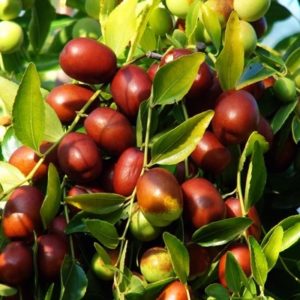
Ziziphus jujube Semen
(seeds of Ziziphus jujuba Mill. var. spinosa)



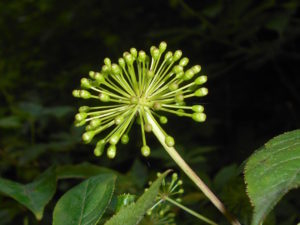
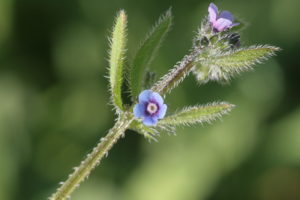
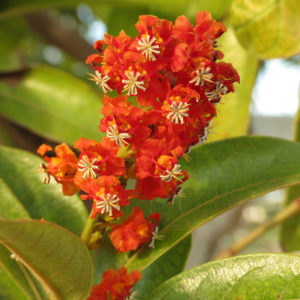
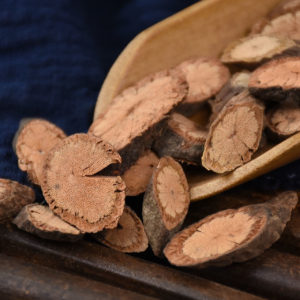
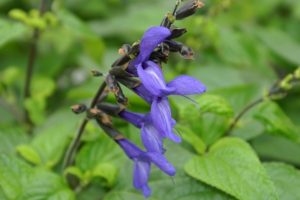
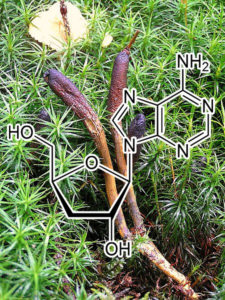
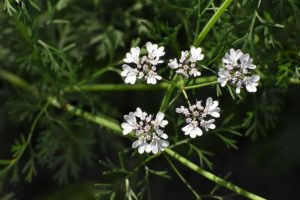
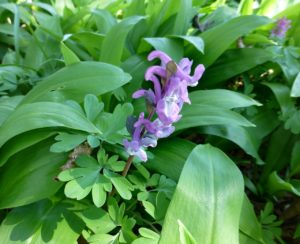
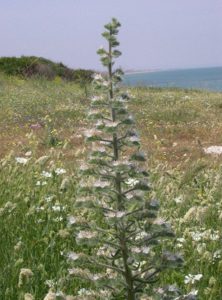








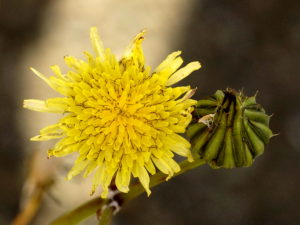




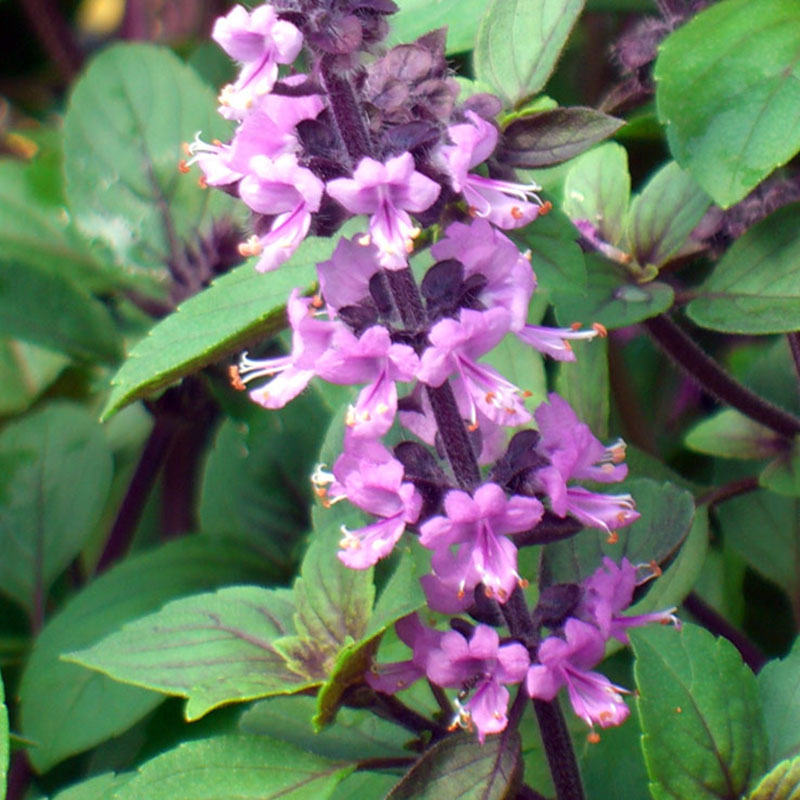





















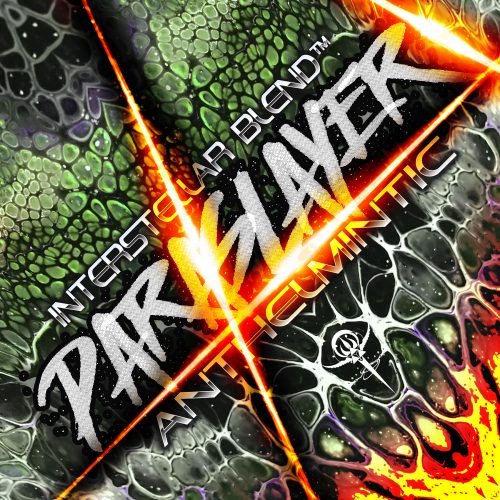

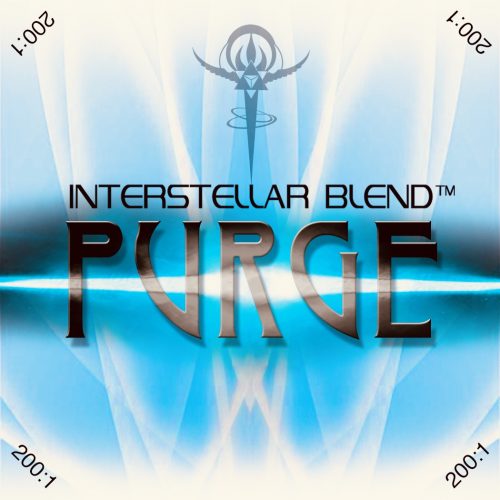
Reviews
There are no reviews yet.